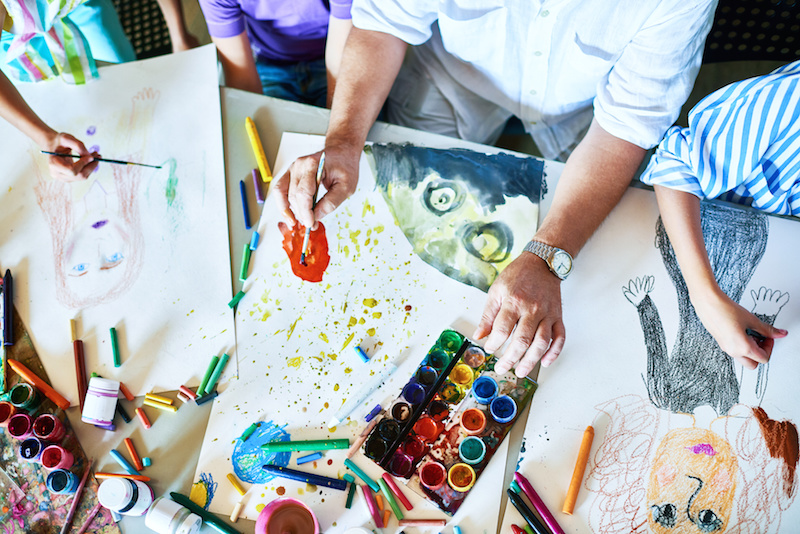
Why I Chose Art Therapy
When I was 18, I went to college with the intention of being an artist. During my Freshman year, I was given an opportunity to work with children at Primary Children’s hospital. My job description was to teach patients the basics of a digital camera as well as how to photoshop their images.
I remember working with several patients, who, when handed the camera, began looking around the hospital at items they could take pictures of. I was frequently asked by patients how long something, such as a statue, had been there, as they had ‘never noticed it before.’ It was at this moment that I realized the power art can have in making us look at our world differently.
The moment I realized I wanted to be an art therapist was when I was teaching the patients about photoshop. While editing their images, the patients began opening up about why they were in the hospital or sharing about their life, all without even recognizing it or being prompted. Some patients would even be receiving treatment while we were editing the images, and they would completely forget about the nurses and machines in the room and become engulfed in their art. It was at that time that I recognized I didn’t want to sell my art anymore, but rather use it to help others heal. It was after this moment that I began doing research and came across art therapy.
What is Art Therapy?
Art Therapy is a form of therapy that bridges the gap between the left brain (analytical side) and the right brain (creative side). Often, we struggle to find the right words to describe a certain situation, this is where the art comes in. Art therapy allows clients the ability to convey exactly what they want to say, without the use of words. Have you ever been so mad or happy that you simply cannot describe it, but could draw on a page and feel like someone may understand it? There is a reason there is the saying “a picture says a thousand words.” Art speaks for us where words sometimes cannot.
Art allows clients to express themselves both visually and verbally, ultimately leading to a deeper exploration of life challenges. There are several benefits of art therapy, with one key benefit being that it allows clients the opportunity to express topics and subjects that they may otherwise find difficult to communicate with simply words alone. Another key benefit to art therapy is that art acts as a distraction, which can temporarily relieve stress and anxiety. Rather than overthinking a certain situation, clients become focused on their artwork that the words flow freely. This is like my experience with the hospital patients who were distracted by editing their images and talking that they weren’t paying attention to the needles and treatments.
One of the biggest misconceptions about art therapy is that you need to be an artist or have some talent to participate. This is not true at all as one does not have to be an ‘artist’ or have any experience to participate in art therapy. The best part of art therapy is that it isn’t art class, you are not getting a grade and there is no such thing as ‘right or ‘wrong’. While the product may play an important role and give insight into a client’s life, ultimately the therapeutic aspect is in the process, not the product.
If you are interested in Art Therapy in The South Salt Lake and Northern Utah area, you’re in luck. Unified Family Therapy offers Art Therapy for children, teens, and adults. If you are interested in learning more or want to schedule an appointment call or text us today.